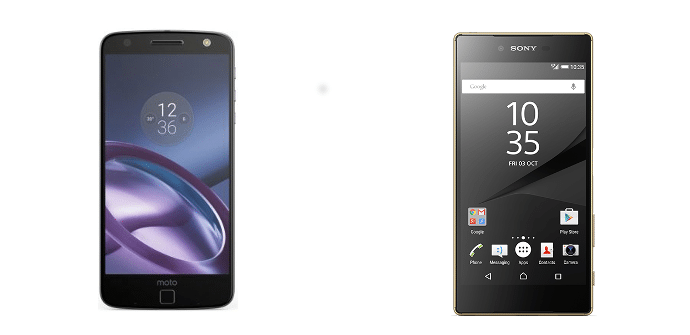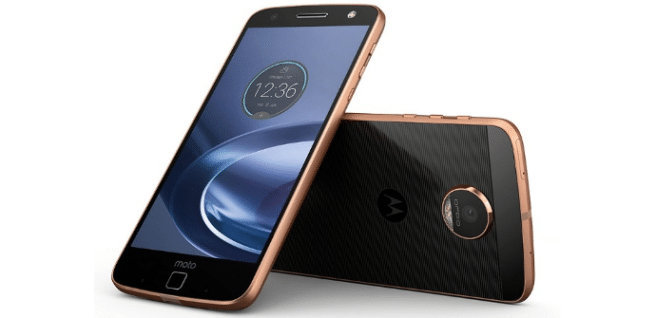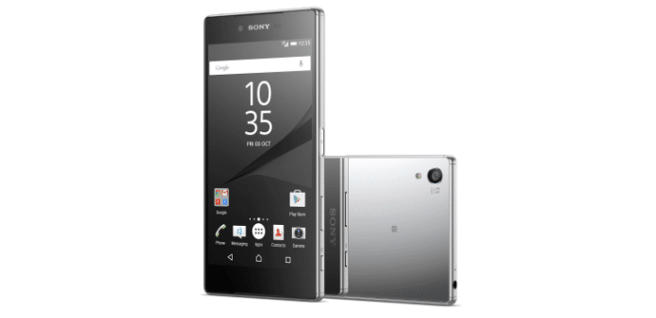
The latest high-end phablet from Motorola has already faced in our comparative with those of Samsung, Apple and Huawei, and now it is the turn of Sony, Xperia Z5 Premium, which despite the time that has elapsed since its presentation, can still boast of being the only one with a 4K screen. Is this enough to make it remain an attractive alternative to the new Moto Z? What are the great attractions of this one? We try to help you decide which of them may be the most interesting for you with a complete review of their Technical specifications.
Integrated
As is required in high-end devices, we find two phablets that not only leave us great finishes but also offer us premium materials: metal casing for the Moto Z, which finally leaves behind the plastic of its predecessors, and the traditional glass casing of the Xperia Z although now with metallic finishes for the phablet of Sony. With both, we will also have a fingerprint reader, although the Xperia Z5 Premium can also boast of being resistant to water and dust.
Dimensions
Although in both cases we find two relatively compact devices for the size of their screen, it is true that neither of them stands out excessively in this regard, a little more the phablet of Motorola, But not by much (15,33x7,53 inch against 15,44x7,58 inch). In what does have a clear advantage Moto Z, however, it is in the thickness (5,2 mm against 7,8 mm) and in weight (136 grams against 180 grams), two of its great attractions.
Screen
We already mentioned at the beginning that Xperia Z5 Premium stands out precisely for its screen 4K, although it is true that this resolution will only be applied to multimedia content recorded in this way, while normally we will use a Full HD resolution (1920 x 1080). The Moto Z, meanwhile, is somewhere in between, thanks to its Quad HD resolution (2560 x 1440). Regarding the size of the screen, it is in both cases 5.5 inches.
Performance
Here the balance tips from Moto Z, simply because being a newer model, it already comes with the latest high-end processor from Qualcomm, While in the Xperia Z5 Premium we still find that of the previous generation (Snapdragon 820 quad core to 2,2 GHz against Snapdragon 810 eight core to 2,0 GHz), in addition to more RAM (4 GB against 3 GB) and with Android Marshmallow pre-installed.
Storage capacity
Equality is reestablished in the storage capacity section: both offer us the 32 GB internal memory common in the high-end and also give us the possibility of expanding them externally through a micro-SD card.
Cameras
With your camera 23 MP el Xperia Z5 Premium It became the phablet with the best camera last year, but in 20166 some manufacturers are taking a lot out of the formula of fewer megapixels but larger, which is what the Moto Z (13 MP). As far as the front camera is concerned, however, it is the phablet of Motorola the one that wins in number of megapixels (8 MP against 5 MP).
Autonomy
The point where the Moto Z It is probably the autonomy, at least with regard to the battery capacity, which is quite small for what is used in a phablet with a screen of that size and, indeed, the Xperia Z5 Premium comfortably surpasses you in this section (2600 mAh against 3400 mAh). It must be taken into account, in any case, that consumption is also an important factor, so it cannot yet be ruled out that the tests of real use give us some surprises.
Price
El Xperia Z5 Premium It was among the most expensive phablets we could buy when it was launched, but one of the advantages that some time has passed since then is that it can now be found at significantly lower prices at many dealers, even below the $650. With respect to Moto ZWe are still waiting to have official data of its launch in our country.

